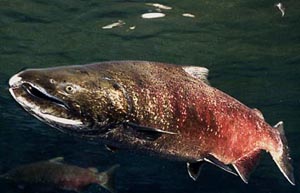Daven Tubb Forest and Stream Ecology Web page
Assignments and Homework Policy
Students will work on a variety of tasks that range from discussion and reading assignments to hands-on activities,laboratory investigations, and State Science Work Samples. For some students the work will be completed in class, others will find that they need to finish the assignment at home. Students also have the option of revising and editing some assignments that are already graded (lab reports, for example).
Grades
Student Folders are graded every two or three weeks. Reading assignments, vocabulary, and other worksheets are worth 5 points Lab reports are worth 10 points and projects and work samples are worth 20 points. Students are asked think of their folders as "portfolios" of their best work.
Other Course Titles
Click here to find the Oregon State Standards for Science Education
Forest and Stream Ecology

Course Description
This course starts with a splash as students dive into
the Salmonwatch Program, studying watersheds, salmon and their life cycles,
and the dynamic relationships between forest and stream. Students will
take a field trip in late September to watch salmon spawning, test water
quality conditions, and learn about native plants on the Upper McKenzie
River. Studies continue in the classroom, monitoring salmon egg development
and growth, studying fish anatomy and behavior, and learning more about
salmon as an important and valuable resource.
While ecology is the central focus of this course, fundamentals in life
science provide many interesting and challenging lab inquiries. Students
become competent in observation, measurement, and use of the scientific
method. They study the changing nature of forests and streams in the Pacific
Northwest, and how climate and the use of resources impacts these vital
ecosystems. Students learn about of life cycles, species adaptation, genetics,
and natural selection. Instruction is guided by the Elements of Inquiry:
learning how to form scientific questions, design investigations, collect
and present data, and finally to critically analyze data and draw reasonable
conclusions. Skills relating to Scientific writing, and scientific illustration
skills will be practiced and developed.
This course is designed for students to meet or exceed Oregon State Standards
in Life Science, and to learn how to create Scientific Work Samples using
the Elements of Inquiry.
To earn a C2 or better a student must keep an organized folder of their
completed work and participate positively in classroom activities.
